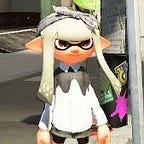How to Expand Your Japanese Vocabulary while Watching Anime
Utilize your Anime time to pick up Japanese words.
Can you actually learn Japanese with Anime?
The answer is not that simple. To enjoy anime without translated subtitles, one would need a basic understanding of Japanese, around JLPT N4-N3, or have completed Genki I/II. From what I can tell, rather than trying to learn Japanese through Anime, quite a number of people want to learn Japanese for Anime.
But isn’t Anime a waste of time?
Consider this: the hours spent watching all the seasons of Naruto or Bleach could be used to go through a Japanese language textbook or to take Japanese lessons that could enable you to reach a JLPT level of N5 or N4. If those hours were spent in speaking practice, you may even be able to have a casual conversation in Japanese now. But would you?
The truth is that textbooks are nowhere near as engaging as anime. All the verb conjugations, kanji flashcards, and honorifics can be nothing short of overwhelming. When learning a second or third language, it’s important to be motivated. If you love anime, it can be a continuous source of language input and learning alongside other learning materials.
Plus, there’s no need to decide on learning through a textbook or through anime. You can study for 30 minutes from a textbook, take a break, AND watch two episodes of anime every day. With that in mind, let’s ask the real question— how do we get the most out of anime?
Anime with Japanese Subtitles
The first thing you can do is to get used to watching Anime with Japanese subtitles. Defaulting our subs to Japanese forces us to listen and try to understand what the characters are saying. For this I recommend a site called Animelon. It’s an anime streaming website with lots of tools for Japanese learners, including an interactive dialog and a variety of subtitle options. English and Japanese subtitles are available, and you can also add hiragana so you can see how the kanji is pronounced.
Tip: If you’re having trouble keeping up with the Japanese subtitles, just click the Subs button on the lower right for the English translation.
Yomichan
Since we are streaming anime on our browser, we can use Yomichan for our dictionary and for adding words to our Anki decks.
Yomichan is a Chrome extension that allows us to look up words by hovering over them and holding shift. It also integrates with Anki so we can directly add words to our decks without leaving the browser. If you haven’t installed Yomichan or configured it with Anki, check out the following guide.
Anki Setup
Anki is a flashcard application that helps us memorize stuff with its well-known spaced repetition algorithm. To fully utilize its power, we will need to do some initial setup with custom cards.
Creating our Card Model
From Anki’s Toolbar, go to Anki > Tools > Manage Note Types and click Add. Pick Basic and pick a name for your Note Type. Here I named it as Japanese Anime. Now choose your new Note Type and click Fields and remove the default fields and add some new fields. We are going to use Word, Kana, Picture, Sentence, Meaning, Audio, and Pitch.
Customizing the Appearance of our Card
In the Manage Note Types Window, click Cards and enter the fields for the front template and back template of the card. In my setup I show the Word/Sentence/Picture/Audio on the front and Kana/Pitch/Audio on the back. You can also change the colors and size of your card in Styling. You can find my template content here.
Mapping the card in Yomichan
Open a new Chrome window and navigate to Yomichan’s extension options. We can now select our Model Japanese Anime for any of our decks. Our newly created fields will pop up and now we can map them to the available markers in Yomichan.
- {expression} — kanji without furigana
- {reading} — kanji with furigana
- {screenshot} — browser screenshot, takes a while
- {close-prefix}<b>{close-body}</b>{cloze-suffix} — sentence with the keyword bolded
- {glossary} — dictionary meaning
- {audio} — Yomichan’s Audio
- {pitch-accents} — all accents provided by Kanjium Pitch Dictionary
Adding a word to Anki
With Anki configured in Yomichan, go back to Animelon and hover over a word to add in the dialogue. Press the green + button top right of the Yomichan popup to add the word.
Preview
Now in Anki’s Main Menu, press Browse and we should see our newly created word. With some initial setup, we can add a fully annotated card with only one click in Yomichan.
Conclusion
Learning Japanese can be tedious and hard, but it doesn’t have to be. With the right tools, Anime can be a great supplementary learning material.
Lastly, I made a video guide for the aforementioned tools if you prefer following step by step.
Let me know if this has been helpful. :)
